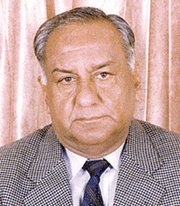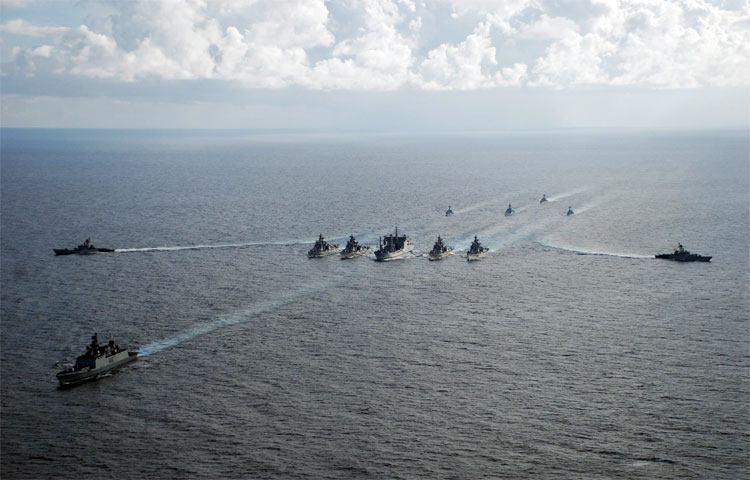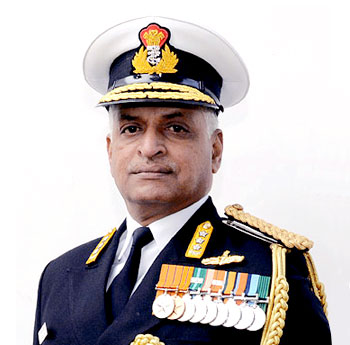INDIAN ARMED FORCES CHIEFS ON OUR RELENTLESS AND FOCUSED PUBLISHING EFFORTS

The insightful articles, inspiring narrations and analytical perspectives presented by the Editorial Team, establish an alluring connect with the reader. My compliments and best wishes to SP Guide Publications.

"Over the past 60 years, the growth of SP Guide Publications has mirrored the rising stature of Indian Navy. Its well-researched and informative magazines on Defence and Aerospace sector have served to shape an educated opinion of our military personnel, policy makers and the public alike. I wish SP's Publication team continued success, fair winds and following seas in all future endeavour!"

Since, its inception in 1964, SP Guide Publications has consistently demonstrated commitment to high-quality journalism in the aerospace and defence sectors, earning a well-deserved reputation as Asia's largest media house in this domain. I wish SP Guide Publications continued success in its pursuit of excellence.
- Operation Sindoor: Resolute yet Restrained
- India’s Operation Sindoor Sends a Clear Message to Terror and the World – ‘ZERO TOLERANCE’
- Japan and India set forth a defence cooperation consultancy framework, talks on tank and jet engines
- Terrorist Attack in Pahalgam in Kashmir: Unfolding a long surgical war against PAK
- Lt General Pratik Sharma takes over Command of Indian Army's Northern Command
National Maritime Security Coordinator
The proposal of the post creation was cleared by the Cabinet Committee on Security during 2021, in order to strengthen the maritime security and ensuring cohesion among various key stakeholders
 |
The Author is former Director General, Army Air Defence and was a member of Integrated Guided Missile Development Programme. |

Current Coastal Security Organisation & Infrastructure-What is to be protected?
Coastal topography of India has 7,516 km long coastline which includes 2,094 km of coastline of 1,382 islands. There have been serious security lapses in coastal security earlier, like the serial blasts of March 1993 and terrorist attacks of November 2008 in Mumbai as a result the Government of India launched a series of concrete actions to plug every possible gap in the coastal security.
Around 95 per cent of India’s trade by volume and 70 per cent by value is carried through the sea routes. There are presently 12 major ports and 200 notified minor and intermediate ports in India. India also has an Exclusive Economic Zone (EEZ) of about 2.37 million sqkm. India is the 7th largest fishing nation in the world and Indian coast accounts for approximately 4 million fishermen settled along the coast in 3,288 marine fishing villages. Department of Fisheries which supports the fishermen, comes under the Ministry of Fisheries, Animal Husbandry & Dairying.
Organisation
Indian Navy (IN) has been designated as the authority responsible for overall maritime security, which includes coastal and offshore security. It also controls all joint operations. IN is assisted by Indian Coast Guard (ICG), Coastal Police and other Central and State agencies. ICG is also designated as an authority responsible for coastal security in territorial waters including the areas to be patrolled by Coastal Police. The Director General of ICG has been designated as Commander Coastal Command and is responsible for overall coordination between Central and State agencies in all matters relating to coastal security. Jurisdiction of State Marine Police extends up to 12 nautical miles (about 22 kms), ICG functions between 12 and 200 nautical miles (about 22 km to 370 km), and the IN extends beyond 200 nautical miles (370 km).
There was the requirement of a specialist National Maritime Security Coordinator (NMSC) to coordinate, integrate & synergise the existing set up on a full time basis
The IN, ICG along with the state Marine police are building the security infrastructure including Coastal Security Schemes which involved the MoD, Ministry of Home Affairs (MHA), coastal states & union territories. The large strength of fishermen are a great source of information & intelligence thus need to be protected. ICG has been undertaking Community Interaction Programmes to include their awareness of the current security scenario and to become the ‘eyes and ears’ to gather information. Union Department of Fisheries issues Fisherman Biometric ID Cardsbeing issued to the fishermen; plans to issuea Quick Response (QR) Code enabled Aadhaar Card with a good quality picture printed on or after March 13, 2019 & Automatic Identification System (AIS) equipment which is mandatory for all vessels above 20m length to be fitted with. Thus the Ministry of Fisheries, Animal Husbandry & Dairying has a key role to play. There are other issues like port security & coastal mapping which have to be implemented jointly.
Border Security Force (BSF). In order to counter the landing of terrorists through sea routes, the BSF formed its first commando unit called Creek Crocodiles which become part of the coastal security set up.
Surveillance, Command & Control. Fully networked Joint Operation Centres (JOCs) have been set up.
NC3IN: Information Management and Analysis Centre (IMAC) is the nodal centre of the National Command, Control, Communication and Network (NC3IN), and is operational since November 2014. The NC3IN and IMAC are also linked with the National Maritime Domain Awareness (NMDA) setup. The Coastal Surveillance Network (CSN) is a “robust hierarchical network” of the ICG.
Apex Body. The apex body is National Committee on Strengthening Maritime and Coastal Security (NCSMCS), chaired by the cabinet secretary which reviews the progress of projects and security environment periodically. A Steering Committee to review coastal security, has been constituted in the MHA under the Chairpersonship of Secretary (Border Management). State/District Coastal Security Committee (SCSC/DCSC).
At present the charter of duties has not been disclosed, neither the shape & contours of the NMSC organisation but it is certain that it is a step in the right direction & will contribute immensely towards improving coastal security
National Maritime Security Coordinator (NMSC)

The Government has appointed India's first National Maritime Security Coordinator (NMSC), Vice Admiral G Ashok Kumar (Retd) who is a former Vice Chief. The proposal of the post creation was cleared by the Cabinet Committee on Security during 2021, in order to strengthen the maritime security and ensuring cohesion among various key stakeholders. NMSC will work in the National Security Council Secretariat headed by the NSA.
What has to be coordinated?
National Committee on Strengthening Maritime and Coastal Security (NCSMCS), chaired by the Cabinet Secretary already exists as an Apex body but there was the requirement of a specialist to coordinate, integrate & synergise the existing set up on a full time basis. The present organisation heads like the CNS & the Director General ICG, are carrying out the duties of coastal security over & above their existing charter. The organisations to be coordinated are IN; ICG; security agencies involved in coastal and maritime security of 13 coastal states and Union Territories; MoD, MHA (Coastal Border Management); Ministry of Fisheries, Animal Husbandry & Dairying; Ministry of Ports, Shipping and Waterways & Department of Space for satellite tracking of boats when implemented-which comes directly under the Prime Minister. At present the charter of duties has not been disclosed, neither the shape & contours of the NMSC organisation but it is certain that it is a step in the right direction & will contribute immensely towards improving coastal security.





